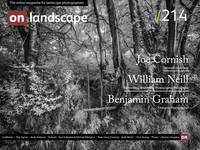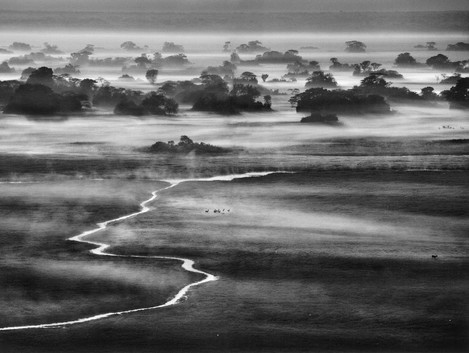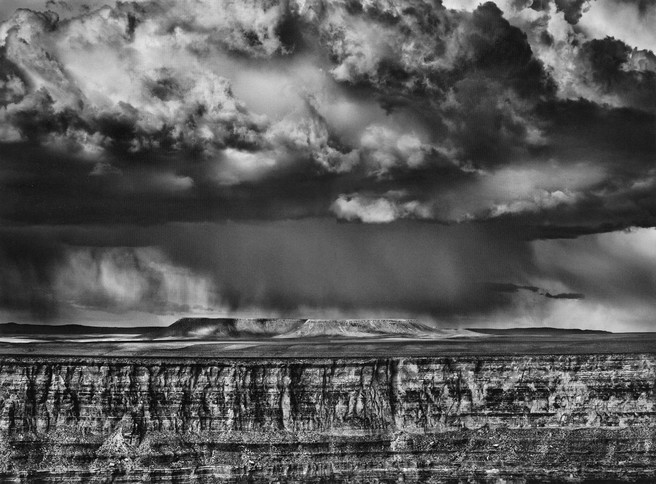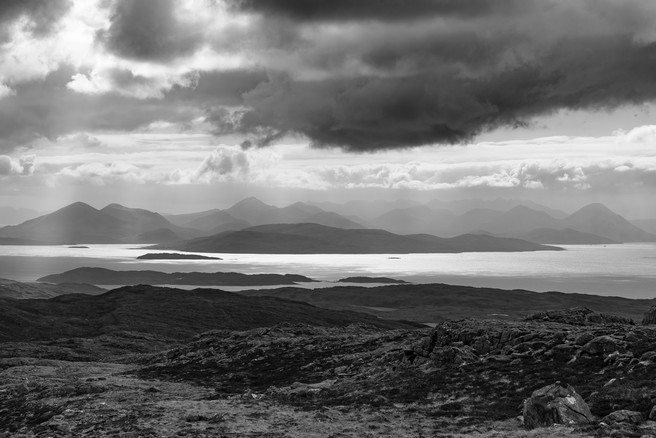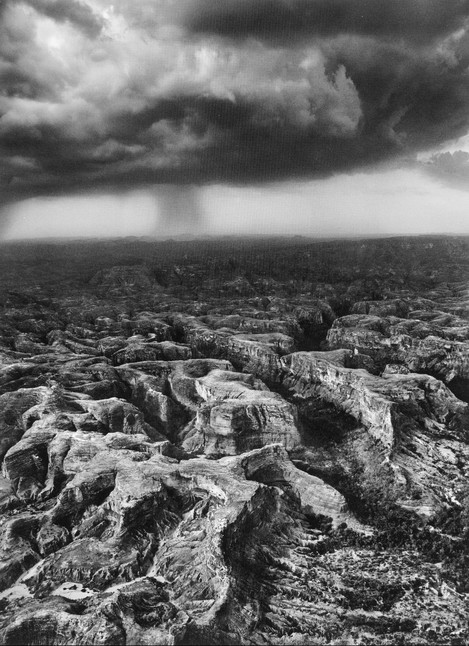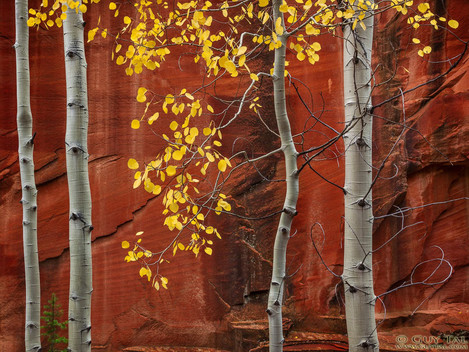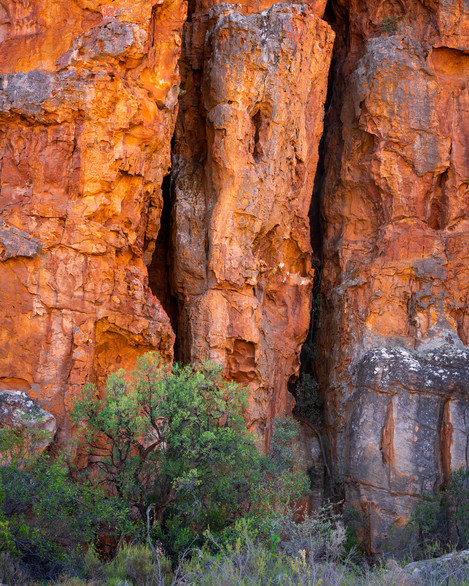Finding Value in the Natural World

Murray Livingston
I am a South African student of architecture with a passion for black and white landscape photography. I currently live in Scotland, where I photograph locally, but also travel for photography frequently.
Being in "lockdown" (or quarantine, whatever you decide to call it), has created lots of time to reflect on the photographic practice of other photographers who inspire me. In particular, I’m going to share with you some of my recent thoughts with a comparison between work by Sebastiao Salgado and Guy Tal. I believe that not only is this kind of reflection, followed by deep introspection, a valuable process for all photographers but that there is a lot to learn from the work of others. I’ll be reflecting on landscape photography and its relationship to what has been termed the Anthropocene (or the current epoch where human activity is the largest impacting force on the planet). I have largely taken this article as a vehicle to explore ideas, almost a thought exercise, so please bear with me as I work through the complex (and inherently political) landscape surrounding photography, philosophy, introspection, and climate change; the following are, quite simply, reflections that I thought might be useful to others.
I see a slow polarisation happening within the landscape photography world concerning our interests in portraying human activity within images. The spectrum ranges from boldly including the presence of humanity (I think of Jimmy Chin’s images of climbers on the side of a mountain) to making images of complete wilderness with no human presence in sight (Ben Horne’s images of fallen leaves in the washes of Zion National Park come to mind).
I don’t think there’s necessarily a right or wrong answer here, merely different approaches to achieve specific artistic visions. No matter your philosophy on photography, most likely if you are out in nature making images you have a deep love for the landscape. Personally, meaningful photography always circles back to this, no matter the path is taken. So, let’s look at some more examples from both ends of the include-exclude spectrum in order to think about and expand these ideas.
Indeed, landscape photographs are often also the vehicle by which we share experiences of nature with others. This takes many forms (print, online, in person, etc.), but at its essence, it has the fantastic capability of storytelling. It can transport viewers into the image or take their imagination to otherworldly fantasies. Rarely (if ever) are images made without the intention of being shared. This is why I believe you cannot ignore the human element in the making of photographs; we participate in every stage of the photographic process, from capture to viewing. An image may not depict a person, but a part of the photographer’s being is held within it. Every viewer likewise brings something as well.
So, to me, the exclusion of people in photos is inherently a paradoxical phenomenon. There is always the photographer behind the camera and more often than not a number of viewers later on. Ansel Adams is often quoted, “the single most important component of a camera is the twelve inches behind it!" I understand this to not only mean the camera is just a tool to realise the photographer's vision, but that when I make photographs, I bring with me my personality, ideas, past experiences, and sometimes traumas. Even if I choose to photograph scenes of wilderness with little or no human presence, the very act of photography is a reflection of the photographer’s self. What I notice on a walk or an element I decide to include in a composition, is a translation of the human experience of being - perhaps even consciousness - into an image. An awareness of what we bring of ourselves to the act of making images is vital towards becoming a more intentional photographer and artist. We cannot escape the presence of humanity in our photographs as it is the only reality we know, but this realisation is actually a powerful tool for storytelling. Photography can bring our own story into relation with the story of nature.
One photographer who seems to practice an artistic self-awareness is Sebastiao Salgado. His long-spanning career has seen many twists and turns. I first encountered his photography some years ago when I watched The Salt of the Earth, a film following Salgado’s journey across the planet to create Genesis. This was his venture into telling nature’s story, an odyssey of the wildest places on earth and the peoples most untouched by modern society. I soon after went to see an exhibition of Genesis in London and was even more enthralled. What caught my attention at first was certainly his graphic black and white style (reminiscent in my mind of chiaroscuro paintings from the Renaissance I had studied in school). I have been excited by the abstract nature of black and white photography ever since, and there is no doubt Salgado has had an influence on this.
So, what have I learned from revisiting Salgado’s Genesis (7 years after its release)? Looking back, I feel as though my initial experience was quite naive. Nearly 5 years on, my perception of Salgado’s photography has changed dramatically. Not only have I changed as a person, but I have been able to spend time with and meditate on his work. It now holds value to me beyond just its aesthetic qualities. Salgado is a master in storytelling, something I think all landscape photographers strive to be better at. He developed this skill through many years of telling the human story. His primary bodies of work prior to Genesis, Migrations & Workers, often focused on the most unpleasant aspects of humanity: war, famine, drought, genocide. Through hindsight, I can now clearly recognise the shift in Salgado’s thinking from his earlier work, solely focused on the human species, to that of Genesis where the entire natural world is taken into account. These reflections have deepened my understanding of his process and photography.
Salgado’s interests in recording the plight of humankind didn’t hold value to him anymore - indeed it was a source of great depression and despondency. To photograph only humans was to reinforce the story that we are above and therefore subjugate nature. Rather, the story that needed to be told was one which placed humans as a part of a collective natural order. This is the key philosophical change that I connected with all those years ago, even if I didn’t quite understand it at the time. It is a philosophical understanding I’m still pondering and learning from today; humans are the largest force on nature, but we are only one part of the system. It is within our power to choose the impact of our actions.
Salgado grapples with these complex ideas and the powerful imagery stands its ground aesthetically. Genesis does something extremely clever by not directly showing the impacts of the Anthropocene - the route Salgado’s previous work had taken. Salgado uses this tactic to build a photographic narrative based on nature before human intervention - i.e. places at the time of Genesis - and therefore tells the story of climate change without actually depicting it. The project asks the viewer to take a first step in the right direction: it places protection of our natural world as an imperative action. His photos give hope that we can foster beauty in wilderness (just under half of the planet according to Genesis). Furthermore, his inclusion of peoples relatively untouched by modern society speaks to a harmony rather than a division between people and nature. The 3 selected images here show how Salgado’s compositional and creative prowess is a result of his deep connection to landscape & nature.
Guy Tal’s fantastic article and related images on photographing rocks for On Landscape, to me, sits somewhere on the other end of the spectrum. Simply put, Tal’s working thesis is that photographing the story of nature is of more interest than photographing the story of people. His writing explains that this is because the deep sedimentation of history within rocks puts plainly into view the value of the natural world, and therefore his interest. Rocks have been here for millions of years and will likely subsist for millions more, long after homo sapiens cease to exist. - a concept that Tal focuses his argument for photographing rocks on. A metaphor to illustrate this point might be to compare the length of human history to a single paragraph in a book of a few hundred pages.
More broadly, Tal speaks to the experience of wandering in wilderness surrounded by the history of nature, and therefore the world, and how this is utterly captivating and enthralling. However, what we cannot ignore, even if we take the approach of focusing on nature in our photography, is the impact that humanity is having on the very wilderness we seek to experience. Tal eloquently expresses his concerns: "I fear that future generations will judge us harshly for our failure to place proper value on wildness, diversity, open space, spirit, solitude, and other treasures of the natural world still available to us today. May they at least know that some of us tried." In a similar manner as Salgado, Tal doesn’t completely ignore the impact of humanity on the planet; he has made the conscious effort to not depict the very thing he is talking about. He relies on forming a deep understanding of place and landscape. His image above, titled “An Unlikely Convergence” perfectly illustrates this. Tal explains that "it is very rare for aspens, which grow at relatively high and cool elevations, to be found in the same area as red sandstone, which usually is found in hot desert areas, at lower elevations. This place is the only one I know where aspens can live among red rocks.” His images inspire awe and wonder for wilderness and thereby speak to the value of nature. To completely ignore the impact of people on the planet would be antithetical to the very experiences we cherish. If nature is something we love so much as landscape photographers, a primary aim of our photography ought to be to promote its protection.
These two photographers have developed very different philosophies and approaches to making images. In Salgado’s work, we can see the expansiveness of nature and its raw untamed beauty. His imagery is coupled to his thinking - telling nature’s story to a big audience. In Tal’s work, we see intimacy and beauty by looking closer and asking of ourselves deep questions about what we value in nature. To me, it is always a worthwhile exercise to critically think about how other photographers go about their work. I hope the appraisal of these two photographers has been insightful.
I’ll share some final thoughts before concluding. We all have a desire for the wilderness. Landscape photographers, me included, often purposefully exclude human elements in our photos to evoke a sense of untouched wilderness within an image. Doing this is certainly helpful in evoking emotions in the viewer beyond the aesthetics of a photograph - of adventure, beauty, or primality. Perhaps ideally, we even try to photograph in locations where this sort of intentional cropping is unnecessary. I find that my experience of a place is a direct influence on the outcome of a photograph (one of serenity and peacefulness in nature will create an image evoking these emotions).
To create photographs of wilderness, or more importantly perhaps to experience wilderness and the natural world, is vital in so many ways, however somewhat paradoxical. Many of the actions we take every day - food consumption, energy usage, travel, photographic tools - are causing destruction to the very thing we cherish. Today, we can no longer deny the influence humans have on the natural world. Our actions have impacts on a global scale on the future possibilities of the planet. As photographers, we must deeply consider every action we take in order to preserve the nature that we love most. It must be that the duty of a landscape photographer is to preserve and enhance nature so that generations to come may experience the many wonders of the natural world that we are so privileged to be able to experience and photograph today. I do not mean to insinuate that humans have dominion over nature, rather that, as a part of the world’s ecosystem, the human species has the ability to tip the scales in one direction or another. The solution lies in finding balance with the natural world around us. To me, landscape photography is a meditative practice in searching for this balance.

